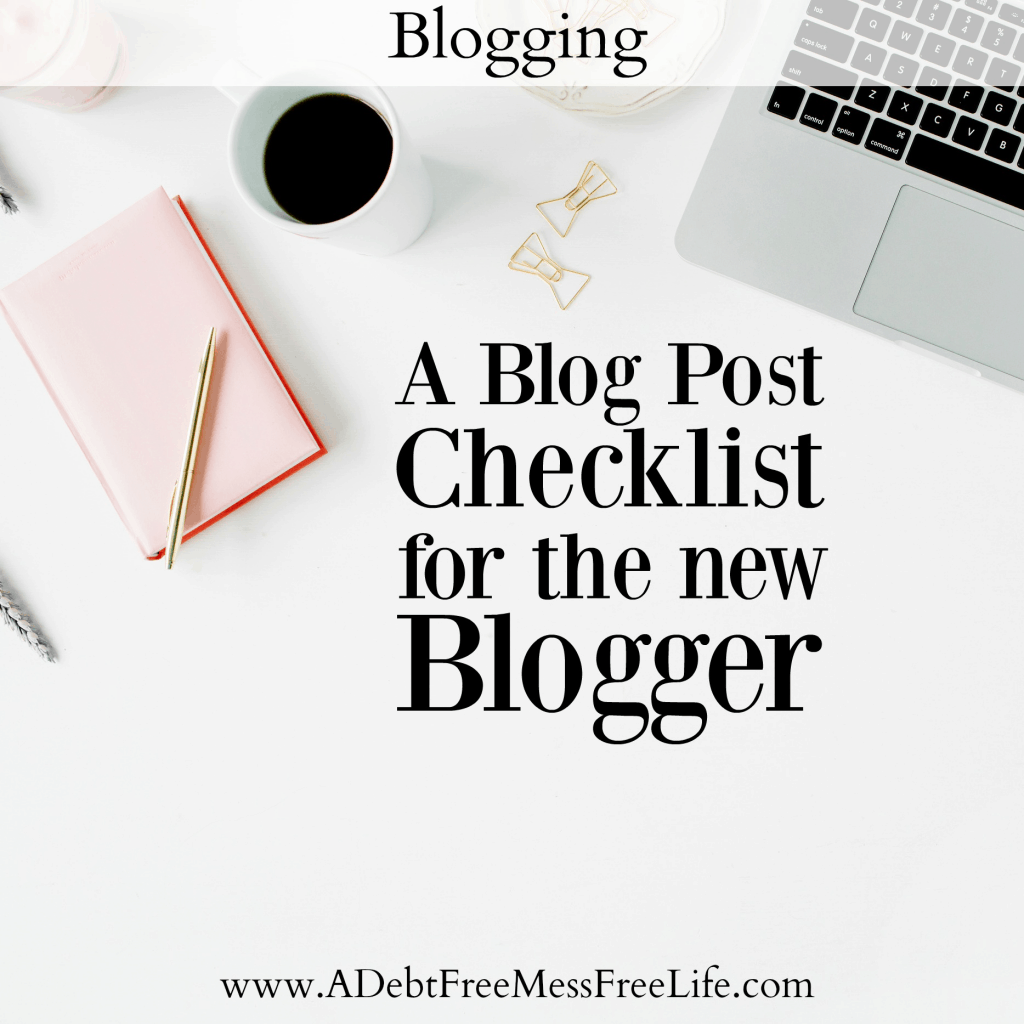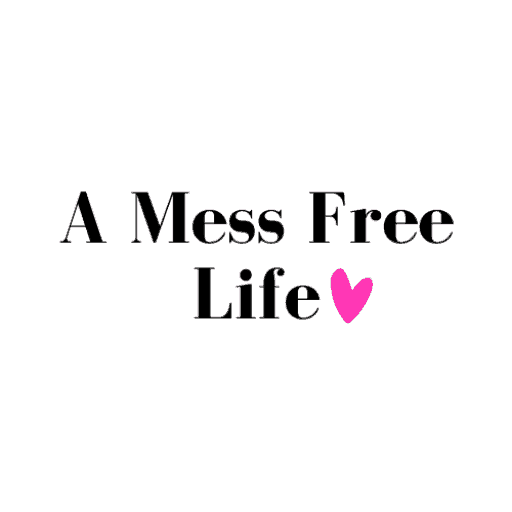A Mess Free Life may collect a share of sales or other compensation from the links on this page.
As bloggers, we have a million and one things that need to get done before we hit publish and send out content out into the world. Often, without a clear and well thought out plan, you miss something critical, and your post hits the internet with mistakes and flaws. How on earth do you remember it all? What is the best way to ensure you’ve got everything covered before you hit publish? I know, I can hear you saying, ‘I wish I had a blog post checklist.’
If you’re going to put so much effort into writing your post, why not take a few extra minutes to make sure it’s at the top of its game? Let’s get started so I can show you everything that goes into creating an excellent and inspiring blog post.
Table of Contents
Blog Post Checklist – Before You Hit The Publish Button
1. Write An Effective Post Title
One of the most important lessons I learned from taking Elite Blog Academy was how important a compelling post title is to get readers to click on a title. When writing a compelling title, it should include keywords or phrases and be persuasive enough to get someone to click through to your post.
Your post title is the most critical part of marketing your blog post. If your title is weak — even if your content is great — then fewer people will click through and read it. If you need some help in creating great titles, Co-Scheduler has a nifty little tool to help you. Read this post from CoSchedule and learn even more about writing effective post titles.
2. Divide Up Text Into Smaller Sections
The worse thing you can do is to have several long, long paragraphs. For best results, break up text into a couple of sentences per paragraph. Try to include no more than 5-6 lines of text in your paragraphs and divide up sections with larger headlines.
3. Deep Link To Past Posts
Deep linking is the practice of linking to previous posts in a new post. So, each time you write a post which discusses a topic you’ve written about before, you can link back to that previous post. This kills two birds with one stone: It gives the reader more information about the topic which is helpful and keeps people on your site longer which is awesome.
Enjoying this Blogging Article? Here are a few more you might enjoy!
Can You Make A Living Blogging?
Blogging Resources For The Newbie Blogger
The First 5 Steps To Six Figure Blogging
4. Ask A Questions
Often a well-asked question at the end of a blog post is just what an otherwise shy reader needs to leave a comment.
I haven’t always been great at this myself, but since I’ve started putting in this small ‘call to action’ I’ve seen more engagement with my content.
5. Ensure Your Images Are Branded
Melissa and Anna from Pinning Perfect shared some amazing strategies with me for why it’s so important for your pictures to be “on brand.” They tell us that your pictures need to fit with your blog’s theme, personality, and audience. I recommend creating templates for your blog post images, which use the same fonts, colors, and overall design. That way, your blog post images will be more consistent and easily recognizable on Pinterest and other social media channels.
6. Make Sure Your Images Are SEO Friendly
Making them “SEO-friendly” means that you have changed the image name to something that includes the keyword or phrase you’re using in your post. For example, instead of “IMG_1234.jpg,” your title could be “chocolate-cake.jpg.”
7. Add “alt text” To Your Images
In most themes, the ‘alt text’ is what will automatically be included in the “description” when someone pins an image from your site. Descriptions are powerful on Pinterest, and it’s the way in which people search, and Pinterest categorizes your post. Without a keyword rich description, Pinterest will have no way to categorize you, and your content won’t be shown to pinners.
8. Add, the No Pin Data Code to Pictures
Another great tidbit from the Pinning Perfect class was learning about the No Pin Data Code.Nothing’s worse than taking the time to create branded images only for your reader to pin something not pin worthy. To make sure readers pin only the image you want to show up on Pinterest, add this code to images that you do not want to be pinned. The code is data-pin-nopin=”nopin”. Place the code in the HTML area of the image after the dimensions and the image will not be able to be pinned.
9. Make Sure Your Post is SEO Optimized
Make your life easier and install the Yoast SEO Plugin. SEO is an important part of your blog, and it’s a way to grow, reach a larger audience and increase your income. Yoast makes it easy to ensure you’re putting your best SEO foot forward.
10. Proofread
I know. You’re probably like no kidding Maureen, I know I should proofread. You’re probably also going to find a mistake or two somewhere in this post and then think me the village idiot who doesn’t follow her own advice. *LOL* In any case, I highly recommend proofreading your posts several times before hitting publish.
I typically write a post, then leave it in draft and reread it sometimes three times before I hit publish. And even then I sometimes miss a thing or two.
11. Add Sign Up Boxes
Before I hit publish, I make sure to add an appropriate free offer/sign up box at the end of every post. I have several options to chose from and depending on what I’m writing about I chose the one that would most resonate with the reader.
12. Check Preview
Preview your post to see that it looks like it should and that it’s easy to read.
Some Things To Remember After You Hit The Publish Button
1. Pin to Pinterest
Since you’ve already added your “alt text” for your images before inserting them into your post, the description is already written. Now, all you have left to do is to pin the post to Pinterest.
I have several boards I typically post MY content to. This includes my ‘the Best of’ board which only has my content on it, as well as other boards. For example, for this post, I will post it to my The Best of A Debt Free Mess Free Life board, my The Business of Blogging board, and my Make Money From Home board.
2. Schedule to Group Boards
Similarly, if you’re part of any group boards, you’ll want to share your pin to these boards as well. You can either do this manually, over the course of the next couple days, or you can use a scheduling program to schedule your pin to your group boards. I use Tailwind because it’s an API Approved Pinterest scheduler.
3. Share on Facebook and Twitter
Don’t use a scheduling program to share on Facebook or your reach will be significantly affected. Instead, use the Facebook Scheduler to accomplish this task. I like to share my posts at different times of the day during the first week the post has gone live.
With Twitter, you can use a scheduler like HootSuite to schedule not only the first tweet but multiple tweets over the first week.
4. Post to Google+ and Linked In
I don’t get tons of traffic from these sites, but enough that I continue to post my content here after the blog goes live.
5. Facebook Live
Last but not least, I often repurpose my content into a short Facebook Live Video and link back to my blog post, so it gets even more eyeballs. It’s a nice way to give the post a mid-week bump.
So just remember to follow the checklist and cross each off your list, so you not only create a compelling piece of content but share it proudly via all your social media channels.
What else in on your check off list? Let me know!




